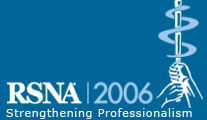
Abstract Archives of the RSNA, 2006
Tony Voet MS, Presenter: Nothing to Disclose
Pieter Devolder MS, Abstract Co-Author: Nothing to Disclose
Jan Vercruysse RN, Abstract Co-Author: Nothing to Disclose
Philippe Duyck MD, Abstract Co-Author: Nothing to Disclose
Since the radiology department of the Ghent University Hospital is scattered across a 52-acre campus management staff is confronted on a daily basis with a wide variety of management issues. The purpose of this study consists of improving the manageability of this large department by means of cross-system data mining originating from several different information systems.
Having already a lot of experience in applying data mining we decided to take this technology to a higher level by converging data from the appointment system, HIS, an indexing solution, order communication, PACS, RIS, single sign on, speech recognition, telephone usage, and our web based result server. We designed and built a data warehouse containing all user actions and other events collected from the different information systems using the KETTLE ETL tool chain. More information on this Extract, Transform and Load solution can be found at http://kettle.be/.
Cross-system data mining not only allowed us to fully map and optimize both workflow and scheduling of resources, some more uncommon but highly effective techniques could also be deployed. We developed a real-time tool based on a complex set of fuzzy rules to detect errors concerning data entry, exam requests, billing, and even software bugs resulting in a billing accuracy of 99.99%. Opening up and distributing specially crafted short-term activity reports to all members of personnel led to self-management of resources. This detailed but easily readable information caused a more evenly distributed workload throughout the department with a measurable positive effect on resource availability.
Our management staff has undoubtedly God-like features but alas, omnipresence is not one of them. Luckily, cross-system data mining turned out to be an excellent form of technology to manage a scattered radiology department; this was quite noticeable by a reduced workload and was confirmed by numerous inquiries.
Cross-system data mining using ETL can be very useful to solve managing challenges of a radiology department with a sufficient IT infrastructure.
Voet, T,
Devolder, P,
Vercruysse, J,
Duyck, P,
Managing a Decentralized Radiology Department Using Cross-System Data Mining. Radiological Society of North America 2006 Scientific Assembly and Annual Meeting, November 26 - December 1, 2006 ,Chicago IL.
http://archive.rsna.org/2006/4431455.html

